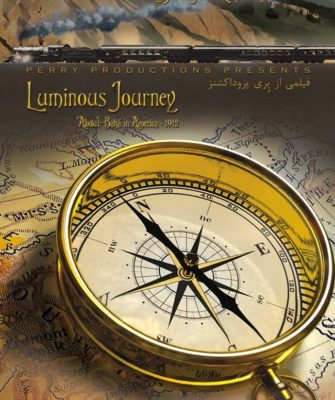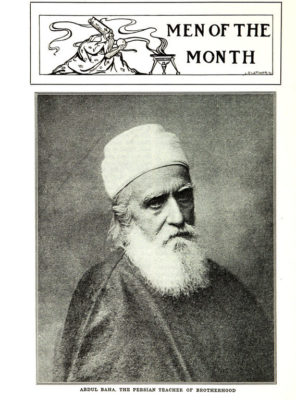



Source: The Promulgation of Universal Peace
Talk at Fourth Annual Conference of the National Association for the Advancement of Colored People Handel Hall, Chicago, Illinois
The Springfield Riot in 1908 made the capital of Illinois the center of national attention, being the first race riot in the North in over half a century. In response the National Association for the Advancement of Colored People (NAACP) was formed, one year later.
Three and a half years later, the NAACP invited ‘Abdu’l-Baha to address their Fourth Annual Conference in Chicago. He spoke at the conference twice on Tuesday, April 30, 1912.
__________________________________
According to the words of the Old Testament God has said, “Let us make man in our image, after our likeness.” This indicates that man is of the image and likeness of God–that is to say, the perfections of God, the divine virtues, are reflected or revealed in the human reality. Just as the light and effulgence of the sun when cast upon a polished mirror are reflected fully, gloriously, so, likewise, the qualities and attributes of Divinity are radiated from the depths of a pure human heart. This is an evidence that man is the most noble of God’s creatures.
Each kingdom of creation is endowed with its necessary complement of attributes and powers… The human kingdom is replete with the perfections of all the kingdoms below it with the addition of powers peculiar to man alone…This constitutes the universality or perfection of virtues potential in mankind. Therefore, it is said that man has been created in the image and likeness of God.
Let us now discover more specifically how he is the image and likeness of God and what is the standard or criterion by which he can be measured and estimated. This standard can be no other than the divine virtues which are revealed in him. Therefore, every man imbued with divine qualities, who reflects heavenly moralities and perfections, who is the expression of ideal and praiseworthy attributes, is, verily, in the image and likeness of God. If a man possesses wealth, can we call him an image and likeness of God? Or is human honor and notoriety the criterion of divine nearness? Can we apply the test of racial color and say that man of a certain hue–white, black, brown, yellow, red–is the true image of his Creator? We must conclude that color is not the standard and estimate of judgment and that it is of no importance, for color is accidental in nature. The spirit and intelligence of man is essential, and that is the manifestation of divine virtues, the merciful bestowals of God, the eternal life and baptism through the Holy Spirit. Therefore, be it known that color or race is of no importance. He who is the image and likeness of God, who is the manifestation of the bestowals of God, is acceptable at the threshold of God– whether his color be white, black or brown; it matters not. Man is not man simply because of bodily attributes. The standard of divine measure and judgment is his intelligence and spirit.
Therefore, let this be the only criterion and estimate, for this is the image and likeness of God. A man’s heart may be pure and white though his outer skin be black; or his heart be dark and sinful though his racial color is white. The character and purity of the heart is of all importance. The heart illumined by the light of God is nearest and dearest to God, and inasmuch as God has endowed man with such favor that he is called the image of God, this is truly a supreme perfection of attainment, a divine station which is not to be sacrificed by the mere accident of color.


![]()
![]()
Whether you are exploring the Bahá'í Faith or looking to become an active member, there are various ways you can connect with our community.
Please ensure that all the Required Fields* are completed before submitting.